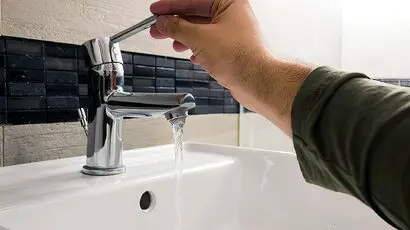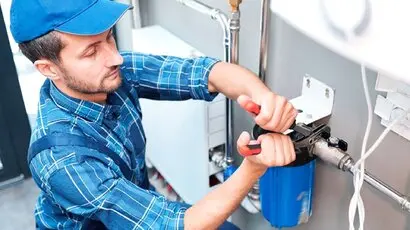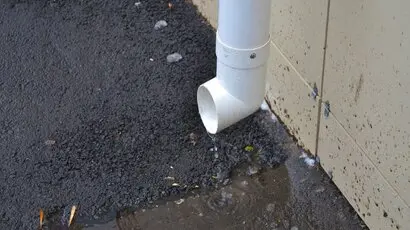Common Causes of Blocked Outside Drains
Blocked outside drains can cause serious water damage if left unchecked. Learn the key culprits-from tree roots to household waste-and what you can do to keep your drainage clear all year round.
According to Sydney Water, thousands of calls are made each year due to blocked drains, with outdoor areas being one of the most common problem zones. Most homeowners don’t realise their drainage system is under pressure until it’s too late—pooling water, foul smells, or a clogged drain suddenly become a serious issue.
Drain pipes outside the home are particularly vulnerable, yet they’re rarely maintained until they’re blocked.
This article breaks down the common causes of blocked outside drains, from garden debris to tree roots, and offers practical ways to prevent drain blockages before they cause damage.
Your home’s drainage system is more complex than it seems. It includes stormwater drains, downpipes, and sewer connections—all working together to carry rainwater and wastewater away from your property. Outdoor drains, in particular, are crucial in managing excess water during heavy rain or storms. They prevent flooding around your home’s foundations, help maintain structural integrity, and reduce the risk of soil erosion.

When the system functions properly, you rarely notice it. But when something goes wrong, the effects can be immediate and costly. Leaves, dirt, grease, or even poor installation can lead to drainage problems that cause water to back up or overflow.
Blockages in these exterior lines often go unchecked until water starts pooling or strange smells rise from the ground. Understanding how your system works is the first step to preventing damage and keeping everything flowing smoothly around your home.
One of the leading causes of blocked drains is right under our feet— tree roots. Constantly in search of moisture, roots naturally gravitate toward the tiniest cracks in underground pipes. Once inside, they expand and form dense, tangled networks that block the flow of water and debris.
Older clay or terracotta pipes are especially prone to this intrusion, making older homes more vulnerable to recurring drainage problems.
Outdoor drains affected by tree roots often show early warning signs, including:
If left untreated, a blocked outside drain caused by roots can lead to:
Detecting root intrusion early is key to keeping your drainage system in good shape and avoiding bigger headaches.

Washing dishes or rinsing cookware in outdoor sinks might seem harmless, but it’s one of the sneakiest ways to cause drain issues. Food waste, oil, and grease cling to the inside of pipes when flushed down external drains.
Over time, these substances cool and harden, leading to a thick build-up that restricts water flow and traps other waste materials like soap and debris.
Unlike a garbage disposal unit, outdoor drains aren’t designed to handle food scraps or greasy runoff. The result? Severe blockages, unpleasant smells, and a higher chance of pest infestations. These drainage concerns often go unnoticed until blocked drains stop everything from flowing.
To avoid the mess, always scrape plates into the bin and avoid pouring fats or oils down any drain—inside or out. Prevention is easier than dealing with an expensive fix.

Seasonal changes often bring more than cooler weather and colourful leaves, leading to drainage problems. As trees shed, falling leaves, twigs, soil, and mulch can easily wash into outdoor drains, especially if grates are left uncovered or neglected. Grass clippings from weekend mowing sessions only add to the mix, quickly contributing to stubborn drain blockages.
During heavy rain, this mix of garden waste and other debris can rapidly clog the drainage system, causing water to overflow and spill onto paths or into gardens. Poor sweeping or yard habits only speed up the process.
The result? Blocked pipes and soggy lawns. Watch for these tell-tale signs that your outdoor drains might be in trouble:
It’s common for everyday items to end up in stormwater drains accidentally, leading to unexpected blockages. Common culprits include:
These objects might seem harmless on their own, but they trap leaves, dirt, and grease and, over time, turn into fully blocked outside drains. If left unchecked, what starts as a small blockage can grow quickly, leading to slow drainage, foul smells, and eventual flooding.
Here’s the revised version with bullet points:
Sometimes the common causes of blocked outside drains come down to what’s hidden underground—poor system design. Key issues include:
When these flaws are present, you may experience:
What starts as a small inconvenience can quickly become a major repair job. Identifying structural faults early can save time, money, and damage to your property.
Older homes are especially prone to these structural quirks, often built with materials or layouts that can’t handle today’s demands. What starts as a small obstruction can eventually clog pipes, trigger plumbing problems, and even cause structural damage. Poor design doesn’t just cause inconvenience—it can truly wreak havoc.
A DIY drain snake can seem easy when your outside drain starts acting up. Sometimes, it is, especially for simple clogs near the drain cover. But not all blockages are that straightforward.
Here’s when a DIY approach can help—and when it’s better to call in the pros:
A DIY drain snake is helpful for:
But professional plumbers use advanced tools to:
Risks of DIY gone wrong:
If your drains are repeatedly slow, smell foul, or overflow, it’s time to leave the stubborn blockages to a licensed plumber who can unblock drains safely and adequately.
Pouring boiling water down a sink is a common household remedy for blocked drains, but it doesn’t always work—and in some cases, it can do more harm than good.
When boiling water can help:
When boiling water can cause damage:
For safer maintenance:
Use hot water mixed with baking soda and vinegar for safer routine maintenance. This combo helps reduce odours and light blockages without harming your pipes.
While boiling water might help with mild drainage issues, it won’t solve deeper clogs. If water continues to back up or drain slowly, it’s a sign that professional help may be needed to flush the system fully.
Detecting problems early can prevent costly drain blockages and damage. Keep an eye out for these tell-tale signs before things get out of hand:
Common early red flags include:
Likely culprits entering pipes include:
Because many common causes of blocked outside drains build gradually, regular inspections—especially during storm season or autumn—are key to staying ahead of trouble.
Not all blocked drains can be solved with DIY tools, and ignoring the signs can worsen drainage problems. Here’s when to call in a pro:
Call a professional if you notice:
What experts bring to the job:
If a coat hanger isn’t cutting it, it’s time to trust the tools and experience of a licensed plumber.
Your outdoor drains do more than handle runoff—they protect your home from flooding, erosion, and costly repairs. Ignoring blocked outside drains can lead to bigger problems that are harder and more expensive to fix.
That’s where WP Plumbing comes in. Our team specialises in clearing stubborn blockages quickly and safely, using the latest tools and proven techniques. We’re here to assist whether you need a one-off inspection, reliable advice, or fast emergency help.
We offer same-day service and 24/7 response across Melbourne. Don’t wait for a full-blown mess— contact WP Plumbing today and keep your drains flowing freely.
Are you wondering about the common causes of low water pressure in the house? Follow our guide as we discuss how you can identify the cause of our water pressure issue.
Are you experiencing blocked drains and struggling to find a reliable plumber in Melbourne? Read on to learn what you need to know before hiring a drain cleaning professional!
Don’t let blocked downpipes lead to costly water damage in your home. Learn how to identify the signs of a blockage and try our effective DIY clearing methods.


